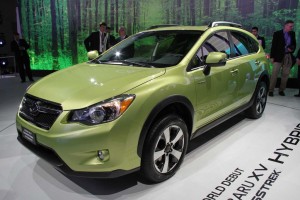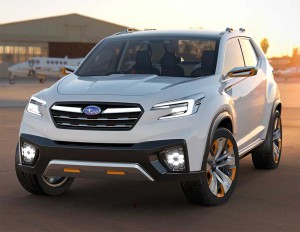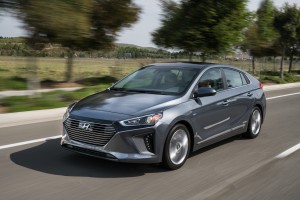Slow off the mark, Subaru is now looking to add electric powertrain options to a wide range of existing models, the automaker’s CEO said during an interview in Japan.
Subaru is ramping up its R&D efforts to record levels this year, with much of that going into new electric powertrain programs. That could prove critical, according to Chief Executive Officer Yasuyuki Yoshinaga, if Subaru hopes to be able to remain a viable competitor in an era of increasingly strict emissions and mileage regulations.
In particular, Yoshinaga said in an interview with the Bloomberg new service, that could become critical in China, the world’s largest automotive market. Regulators there are pushing an aggressive electrification agenda that could eventually restrict conventionally powered vehicles.
(Subaru previews new 3-row flagship. Click Here to check out the new Ascent.)
Subaru has hinted at its electric future with various concept cars over the last few years, notably the VIZIV series.
But while a number of competitors are focused on developing unique battery-based models – such as the new Prius Prime plug-in hybrid, the Chevrolet Bolt EV and the Hyundai Ioniq – Subaru’s approach will be to develop electric powertrains or existing products, according to Yoshinaga.
“If there’s already an attractive Subaru model, for example the XV crossover, and if a customer in Beijing wants one but is only allowed to buy an electric vehicle, if there’s no electric version then he can’t buy it,” he explained during the interview at the carmaker’s Tokyo headquarters. “Providing the choice of an EV means the customer can still desire the same Subaru.”
Subaru’s R&D budge will increase to 134 billion yen, or $1.2 billion during the current fiscal year, which ends on March 31, 2018. To put that into perspective, that is more than double what it spend during the fiscal year ending March 2014. But it is just a fraction of what bigger Japanese makers are investing, noted Bloomberg. Honda’s R&D bill will be 750 billion yen this year, and Toyota’s 1.05 trillion.
Subaru could get some help from that Japanese giant, Toyota holding a 16.9% stake in the smaller maker. They have already worked together, notably on the development of a small sports coupe sold by Subaru as the BRZ, and by Toyota as FT-86.
Toyota is considered the world leader in hybrid technology, an area Subaru only briefly dabbled in with the short-lived gas-electric version of the Crosstrek. But the bigger carmaker has also been slow to push into plug-based technology due to its concerns about lithium-ion batteries. Now, with little to show for its focus on hydrogen power beyond the slow-selling Mirai, Toyota is finally embracing electrification. It just launched a plug-in version of its best-selling hybrid, dubbed the Prius Prime. And it is working up a unique, all-electric model, as well.
(The next Subaru Crosstrek makes its debut at the Geneva Motor Show. Click Here to check it out.)
While it could try to tap its partner for help, for now, it appears, Subaru won’t borrow any of Toyota’s electric drive technology and will focus on developing systems of its own – or, more precisely, develop the technology with the help of suppliers specializing in the field.
That’s not an unusual approach. General Motors, for example, turned to Korea’s LG Chem for the batteries in both its Chevrolet Volt plug-in and Chevy Bolt EV. And a sibling LG subsidiary provides some of the key electronic components for those vehicles.
In his interview, Yoshinaga said Subaru is also searching for partners to help it push forward in both safety and connected car technology. It is now looking at potential tie-ups, including suppliers in the U.S.
“We need to work with parts makers on joint development right from the start,” said Yoshinaga. “If we don’t, we won’t be able to keep up in this era of rapid change.”
(Subaru joins Toyota, BMW to settle Takata airbag lawsuit. Click Here for the story.)



